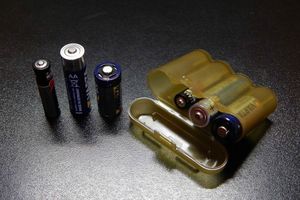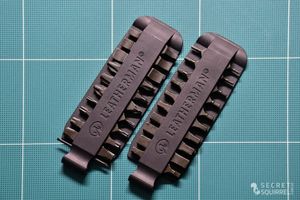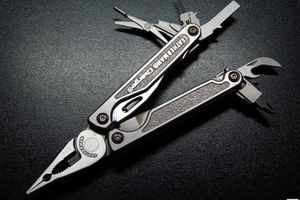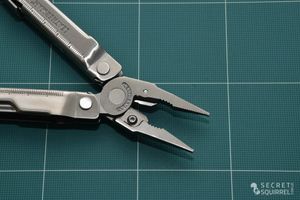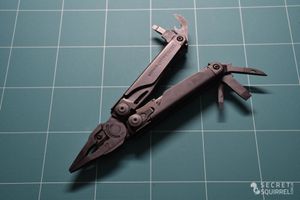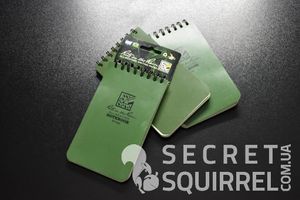Pelican is a recognized leader in the segment of protective cases for equipment, and today we will get acquainted with their products on the example of the Pelican Micro Case 1020.
As soon as you have a need to take important or expensive equipment with you to the field: sensitive user electronics (smartphones, tablets, laptops), photo and video equipment (cameras, lenses, drones), communications (radio stations, GPS navigators and beacons, satellite telephones), fragile optical devices (viewfinders, sights, NVD and thermal imagers), medical devices and materials (solutions and ampoules), scientific samples, etc., then you immediately become interested in the means of their reliable protection from the effects of negative environmental factors.
The American company Pelican has been manufacturing protective polymer cases since 1976, and over the years managed to gain success and recognition in various industries from construction to film production, and from search and rescue operations to combat operations.

Image from https://www.army-technology.com/wp-content/uploads/sites/3/2017/09/2-pelican-products.jpg
Today, the Pelican product list includes weapons cases, toolboxes, protected refrigerators, and more, and the Pelican Micro Cases compact case line includes 12 types of cases. Two of them are intended for transporting microSD \ SD (0915 Micro Memory Card Case) and ComactFlash (0945 Micro Memory Card Case) memory cards, one for storing plastic payment cards and cash (0955 Micro Sport Wallet), and the rest (Pelican Micro Case 1010 - Pelican Micro Case 1060) for storing various priority items. All of them, with the exception of models specialized in storing the iPod (Pelican i1010 Micro iPod Case) and iPhone 4 (i1015 Micro iPhone Case), have a similar structure and materials to the Pelican Micro Case 1020, and differ only in size. Pelican Micro Case 1020 got the following features.
- Protection against mechanical damage according to IP67.
- Internal damper included.
- Carabiner included.
- Integrated valve for pressure equalization.
- Resistance at temperatures from -23 to 93 ° C.
- Main material: Polycarbonate (PC), Xylex, thermoplastic rubber, stainless steel.
- Available colors: Black, Blue, Red, Yellow, with a transparent or opaque cover.
- External dimensions: 17.3 cm x 12.1 cm x 5.4 cm (width \ height \ depth).
- Internal dimensions: 13.5 cm. X 9 cm. X 4.3 cm. (Width \ height \ depth).
- Weight: 200 g.
Further in the review, the Pelican Micro Case 1020 case with transparent walls and a damper in Black is presented.
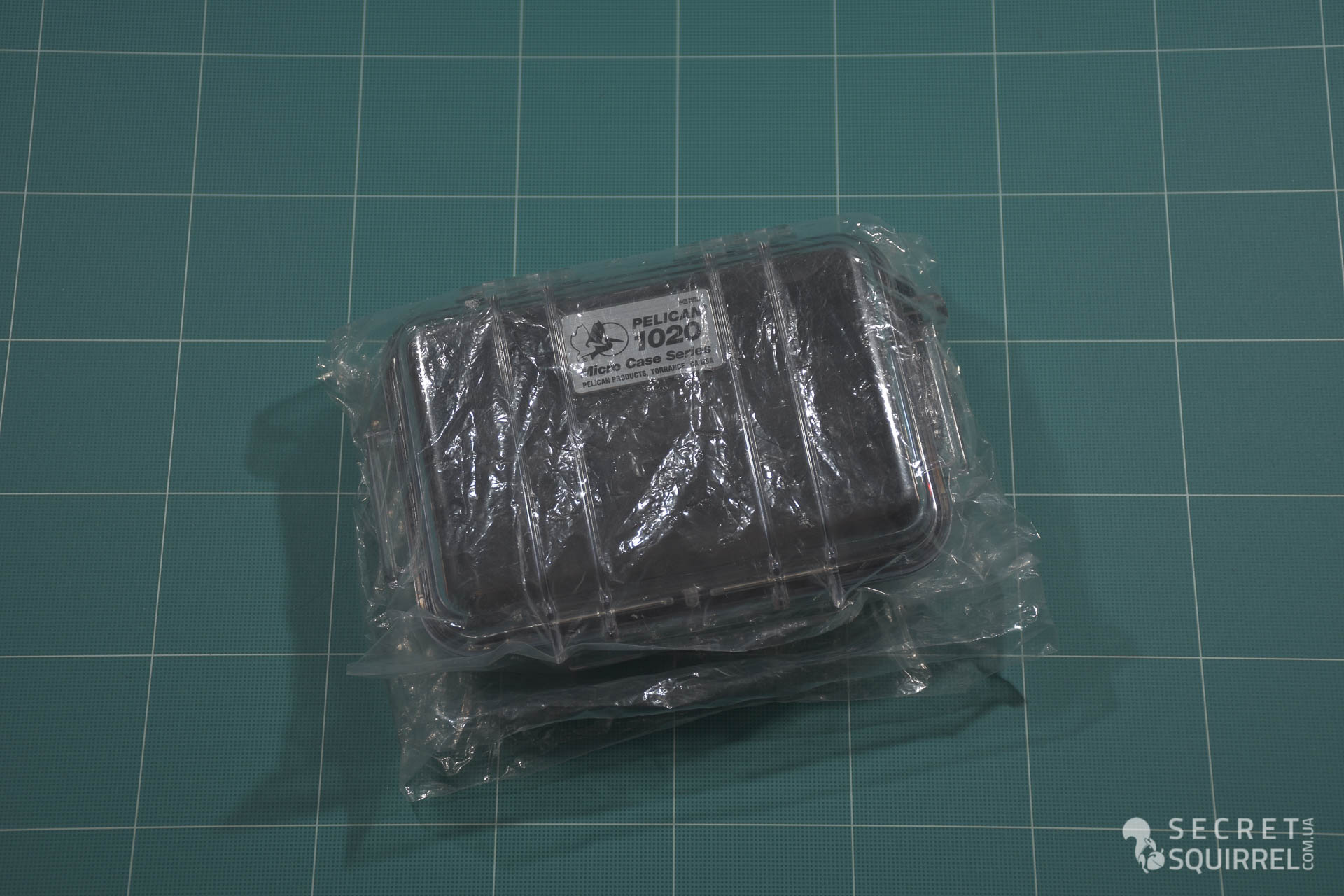
From the packaging for the Pelican Micro Case 1020, I got only a transparent plastic bag and nothing more. No presentable cardboard boxes, nothing like that - everything is cheap and cheerful.

The package includes the Pelican Micro Case 1020 case, a carabiner for fixing it and insurance against loss, and a small cardboard insert indicating the model, key features of the case, and a link to the manufacturer’s official website.
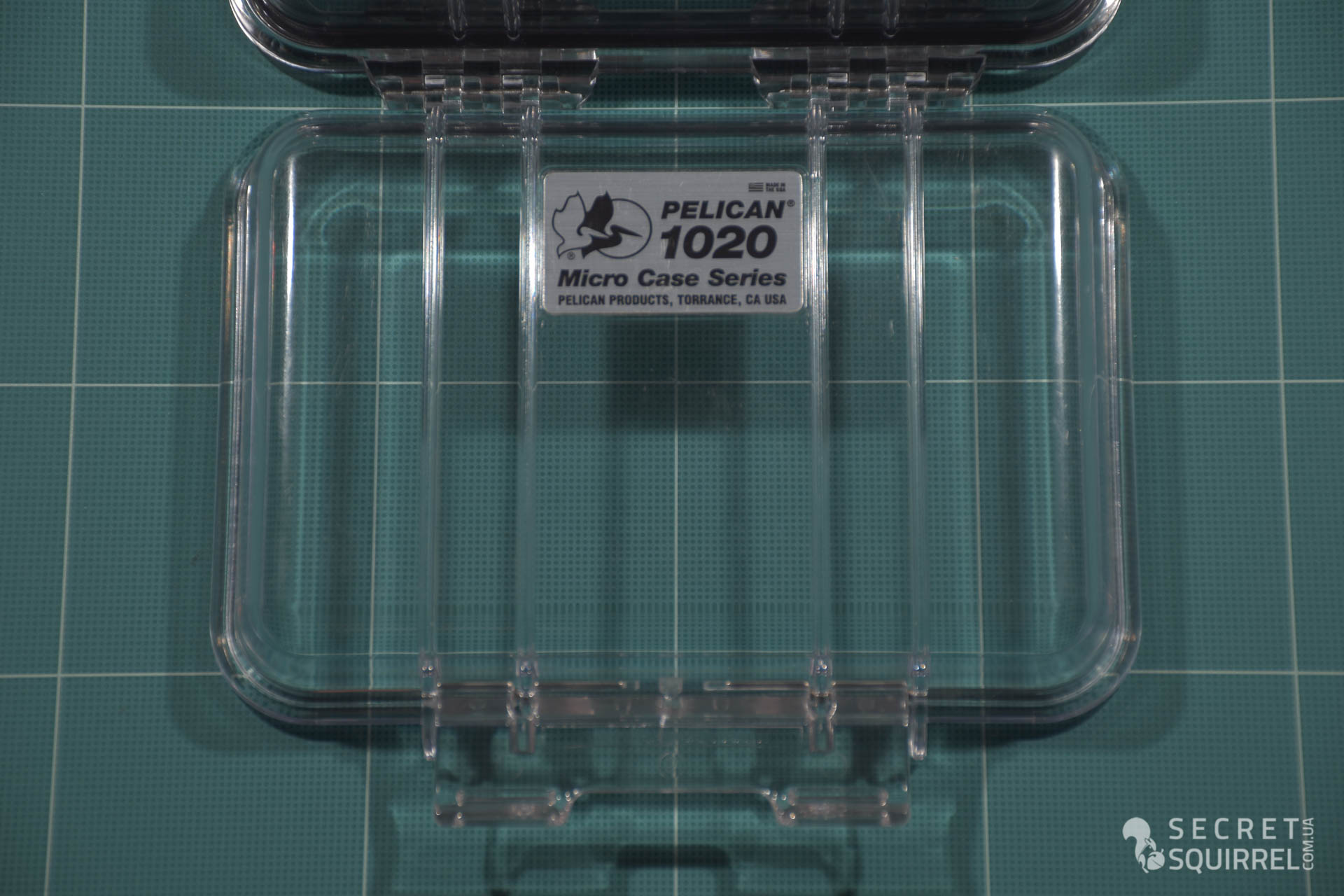
From branding on the cover of a case with a depth of about 1.8 cm there is only one sticker indicating the series, model, and place of production, which the United States of America is invariably. Depending on the chosen color scheme, the cover of your case can be either transparent or opaque. I opted for a version with transparent polycarbonate (PC) walls and a black inner damper.
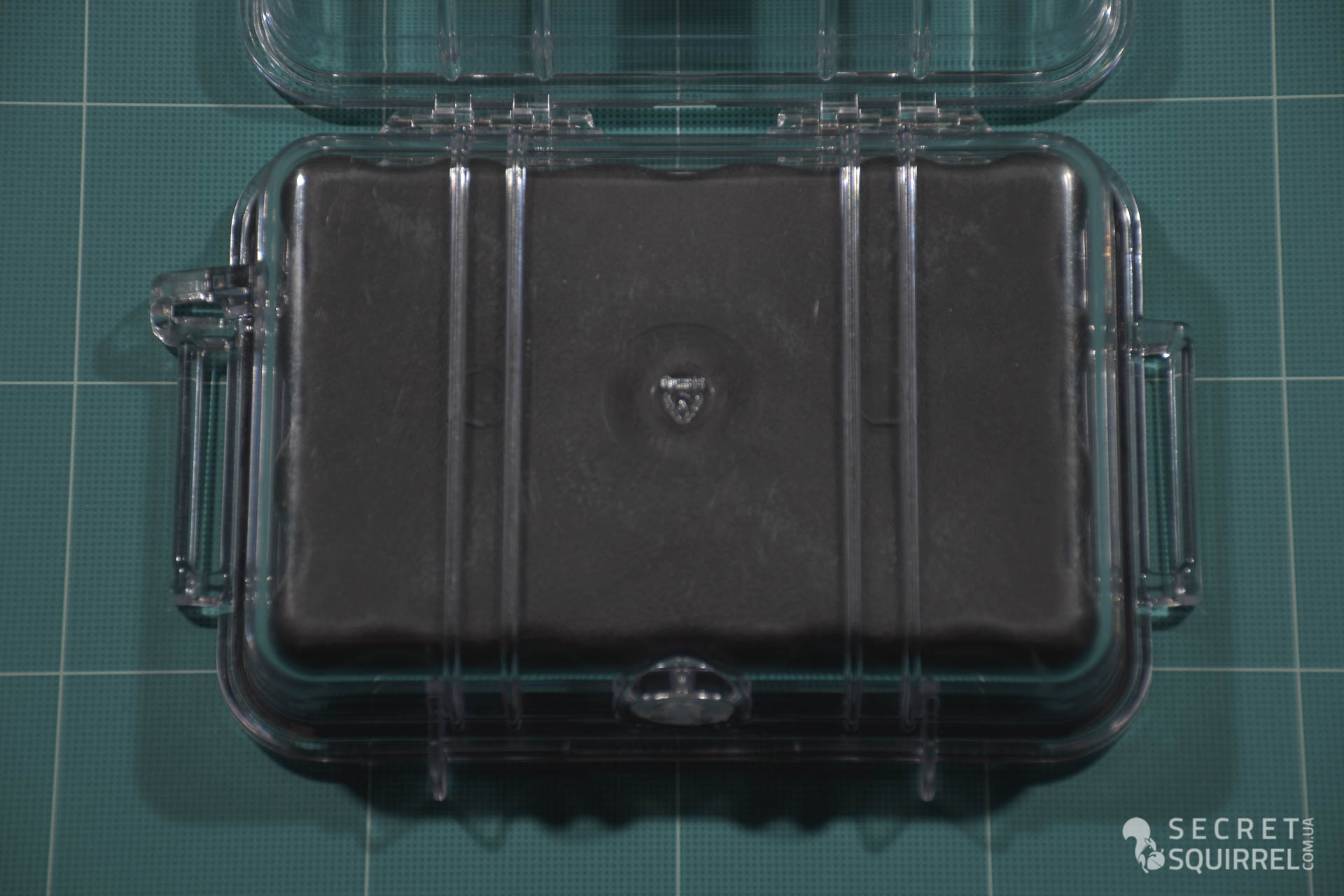
The Pelican Micro Case 1020 case is also made of transparent polycarbonate and has an internal depth of about 2.4 cm, which together with the lid forms a total internal depth of about 4.1 cm.
On both sides of the body in the area of its neck there are two wide loops, with which the case can be fixed on the equipment using slings, or tied with rope ropes to prevent the loss of the case.
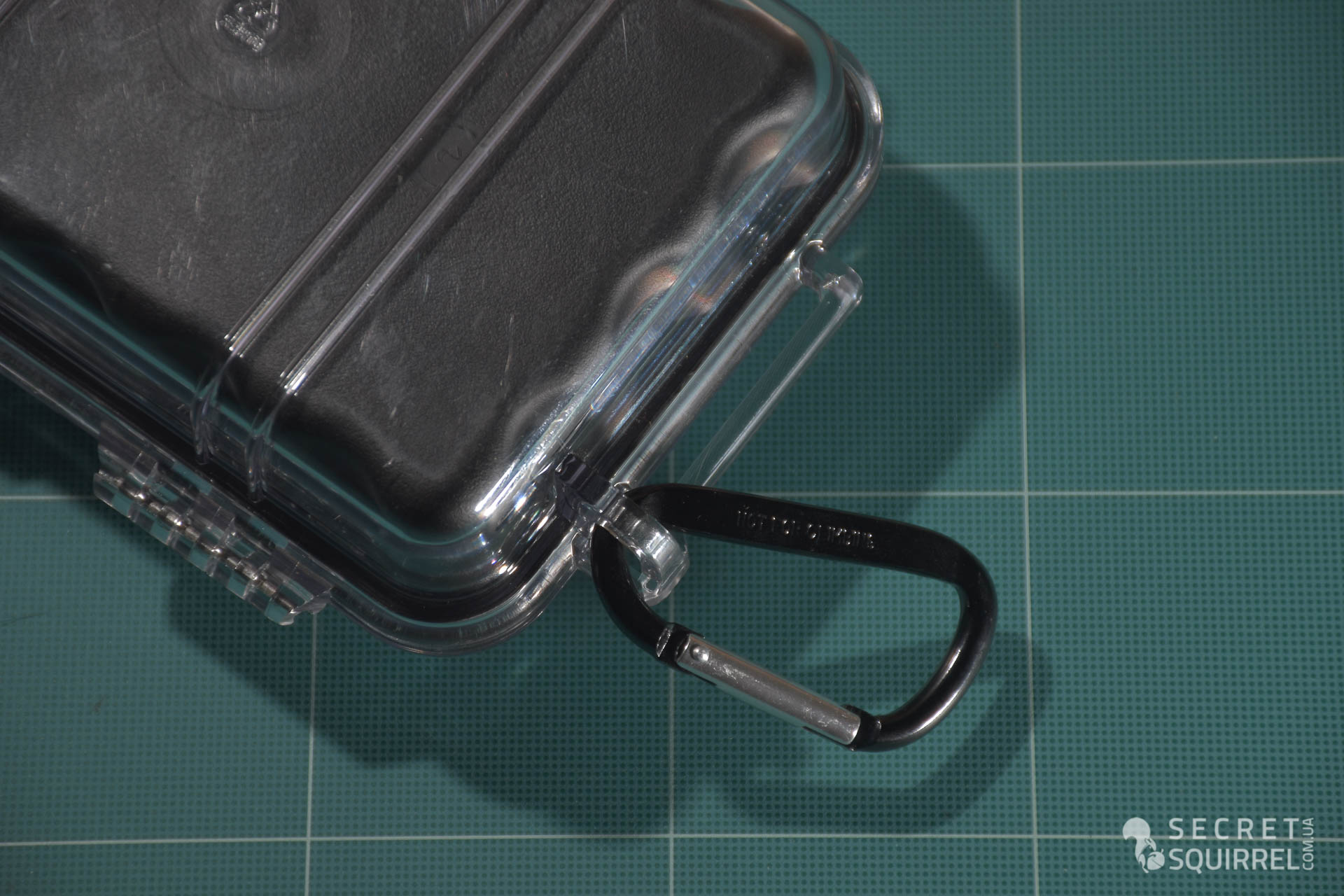
The loop located on the right side of the case also has a small vertical loop where the carabiner from the delivery kit is mounted. Another option for fixing is always a plus. With it, you can fasten the Pelican Micro Case 1020 to the straps or straps and simply hang it from the PALS lines of your backpack in case you need its contents often as you move.
The complete carbine is purely economic and is not intended for use in mountaineering, as evidenced by the corresponding inscription on its flat back.

In addition to safety loops, the Pelican Micro Case 1020 body is also equipped with an automatic valve for pressure equalization. It is located directly under the latch on the front of the case, and is useful not only for flights on an airplane, as the manufacturer directly indicates. It often happens that a case can be closed and opened at different indicators of atmospheric pressure (change of weather, significant movements in horizontal or vertical planes). If at the moment of closing the lid the pressure was lower than when opening, a suction effect may occur, which prevents you from opening the lid of the sealed case. In cases that do not have such a valve, this can lead to the need to pry off the cover with foreign objects to equalize the pressure, which, in turn, entails the possibility of mechanical damage to the sealing rings and leakage. In the Pelican Micro Case 1020 there are no such risks due to the presence of an automatic valve, which greatly simplifies its handling, and also extends its life.
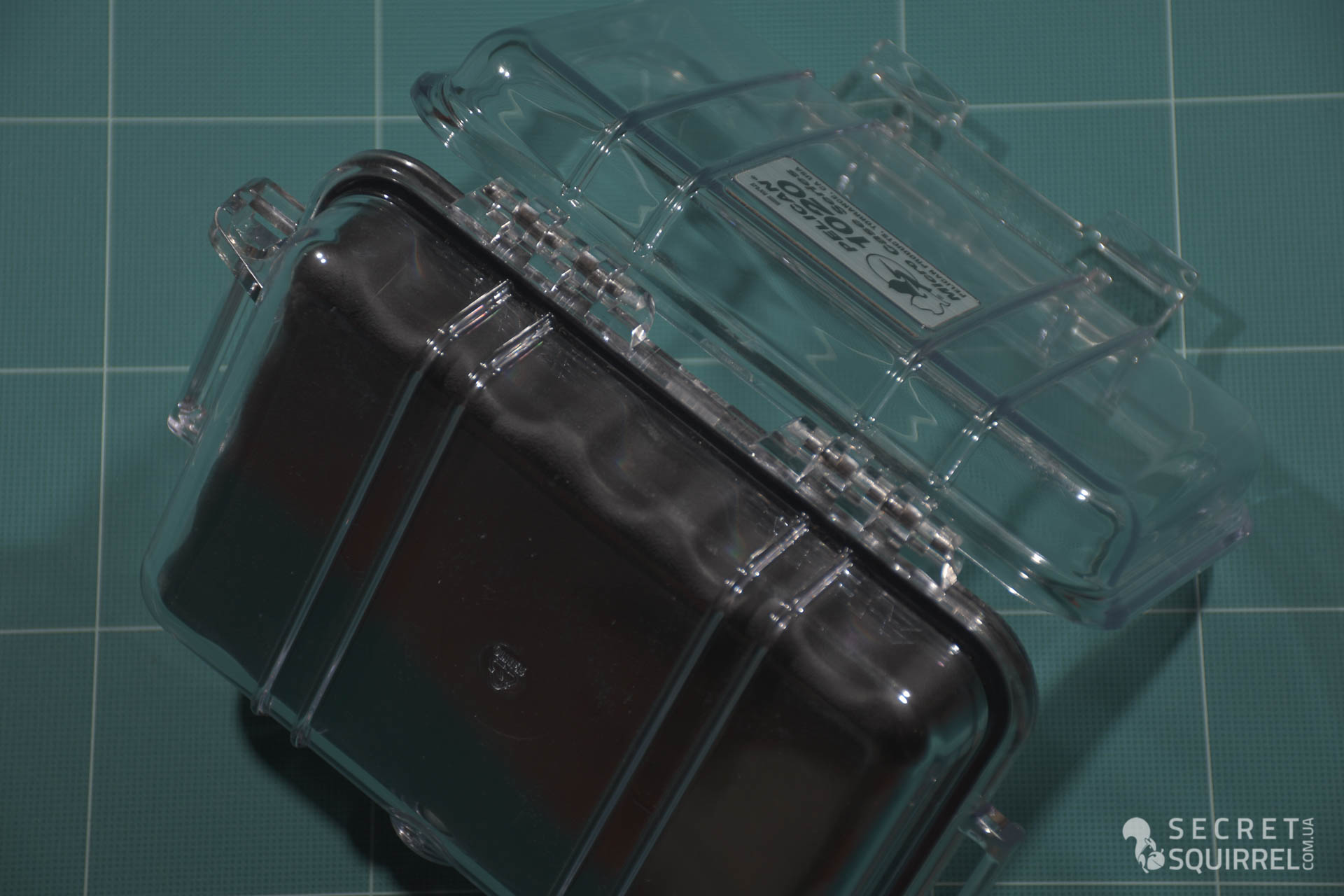
On the opposite side of the valve body and cover are loops that hold them together. Hinges are made of the same polycarbonate and mounted on stainless steel pins, which also gives the design reliability and durability.
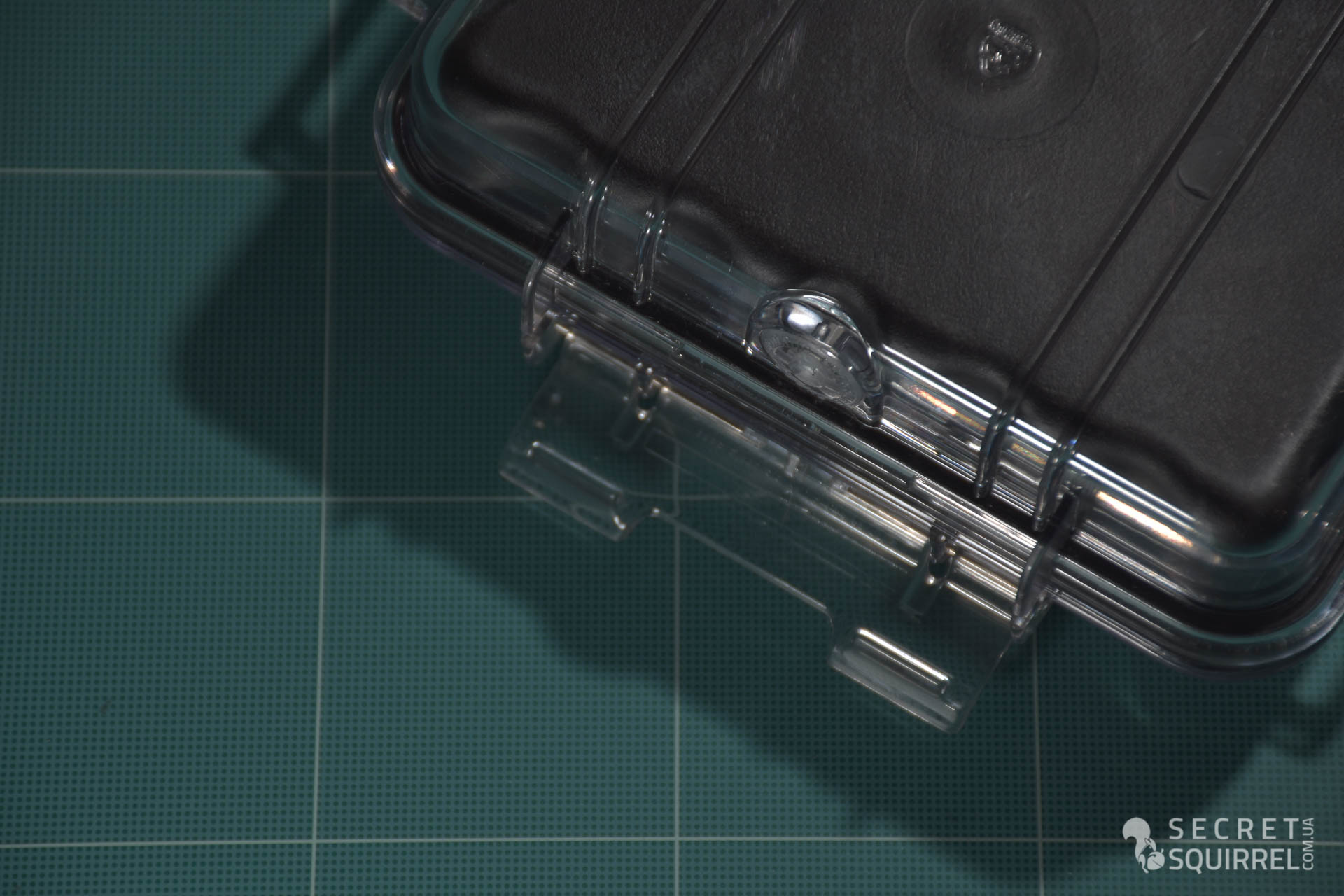
And if the loop is an integral connection, then a bracket of transparent material called Xylex allows you to open and close the case to access the contents. This is a durable polymer that provides reliable pressing of the cover to the case by combining the protrusions on the bracket and the case of the Pelican Micro Case 1020 case. The position of the bracket can be easily changed with your thumb, it does not require fine motor skills, which allows you to open / close the case in a wide range of temperatures and circumstances, for example , even when gloves are put on hands, etc.
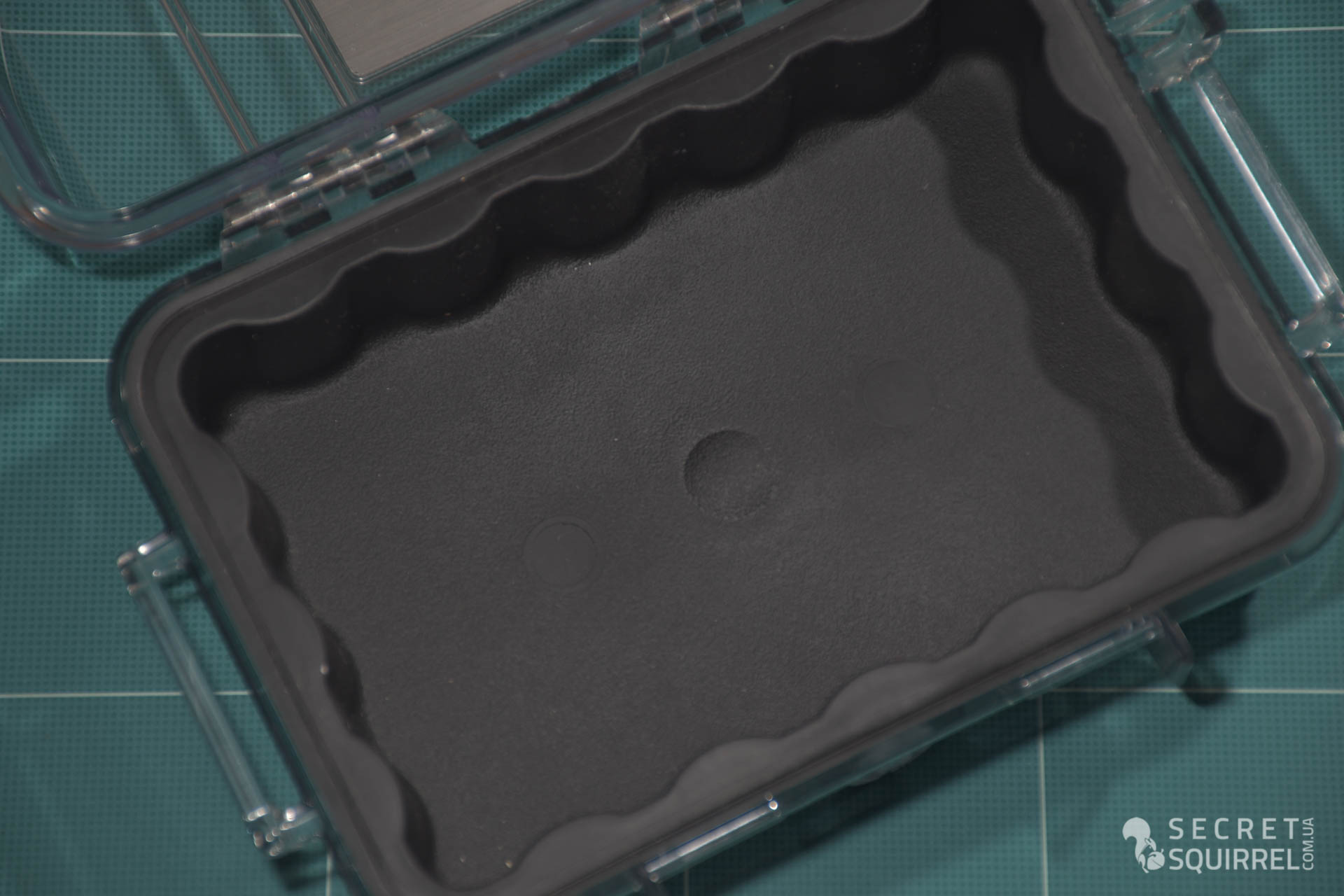
A black damper made of thermoplastic rubber is mounted in the case case, which performs two main functions. Firstly, it plays the role of a sealing ring, which gives the case resistance to dust, dirt, precipitation and water, even with short dives. Secondly, due to the presence of stiffening ribs, it ensures the safety of contents during falls, sorting out a part of the load, and distributing it over a large area. In addition, the damper reduces the rumble and rustling of the contents on the walls of the Pelican Micro Case 1020 during active movements.
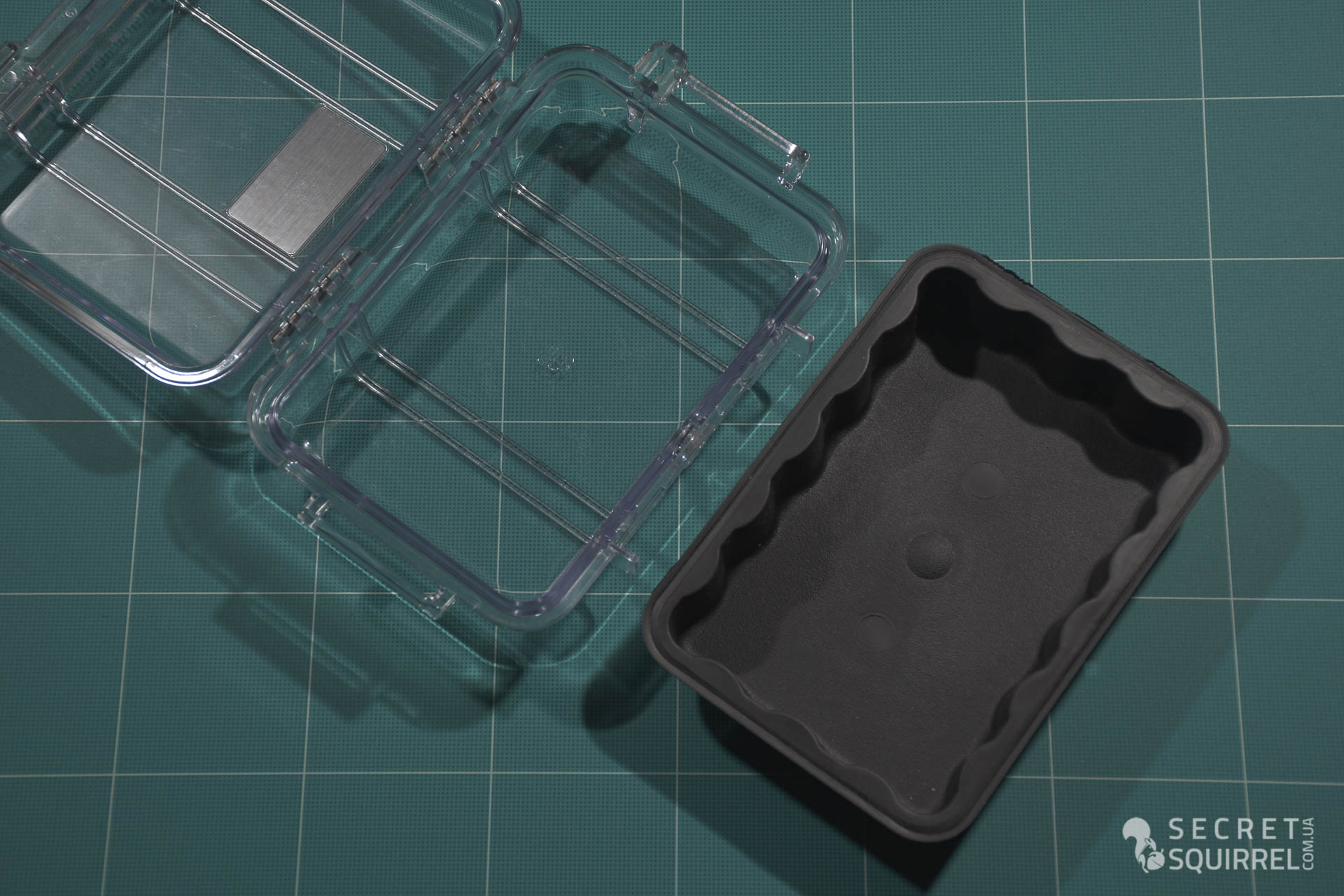
The damper is removable and you can completely remove it from the case if necessary. As a result, you get a completely transparent case, but then you have to say goodbye to water resistance, because there will be no seal around the perimeter of the cover.
Now more about waterproof.
Firstly, in order for the Pelican Micro Case 1020 to be waterproof, it needs a complete damper. Secondly, do not perceive the declared water resistance as an absolute property of the case. So, the manufacturer claimed mechanical protection according to the IP67 standard, implying short-term immersion to a depth of 1 m for up to 30 minutes. The standard does not imply diving to great depths and periods, so you should not expect that the case will cope with them. It is quite justified to expect protection from heavy rain and snowfall, as well as protection against splashes during rafting, or fording across the river. But for diving to great depths, it is not suitable.
To check the waterproofness in practice, I put the SOG Powerlock and Leatherman Surge multitools in the Pelican Micro Case 1020 to “load” it, and it did not float to the surface under the influence of air inside. I put paper towels in the remaining space so that the water flow was immediately noticeable.
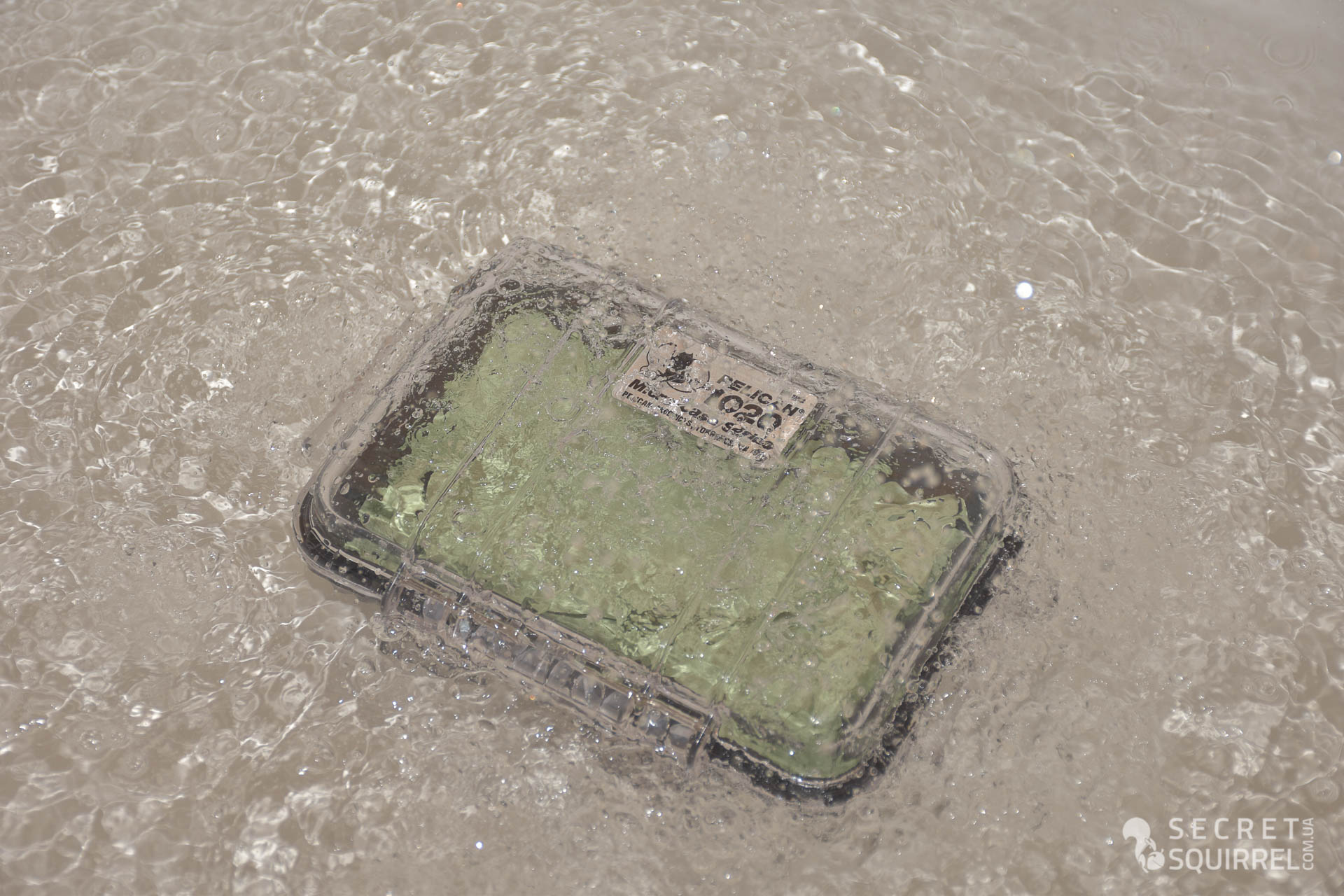
After that, I put the case on the bottom of the bathtub, and began to water it from the shower, imitating heavy rain. By the amount of water, it was more likely not even rain, but tropical rain, but despite this, the towels did not change color, which indicates that the case is able to cope with such “water procedures”.
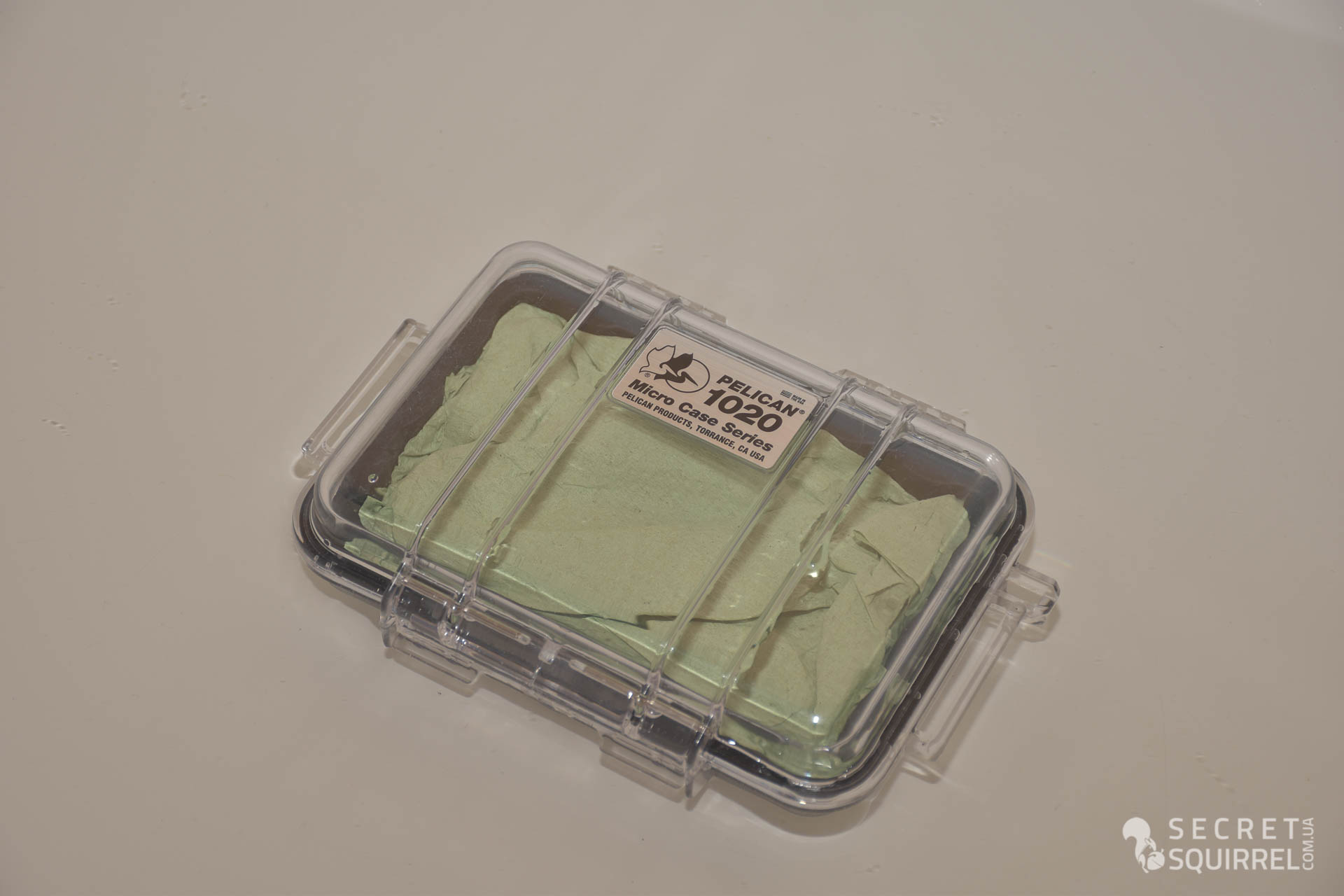
From the shower, I watered the case until the water level rose a few centimeters above the level of the case cover. After that I left the case in the water for about 10-15 minutes.
By the way, if immediately after immersing the case in water you see large air bubbles - do not be scared. Yes, the case may not have been completely closed, or some of the contents got into the o-ring, which should not be forgotten to control before diving, but most often this air is the air displaced not from inside the case, but from the valve to equalize the pressure. There is not a lot of him there and he leaves quickly enough. The structure of the valve is provided and there is no reason for excitement.
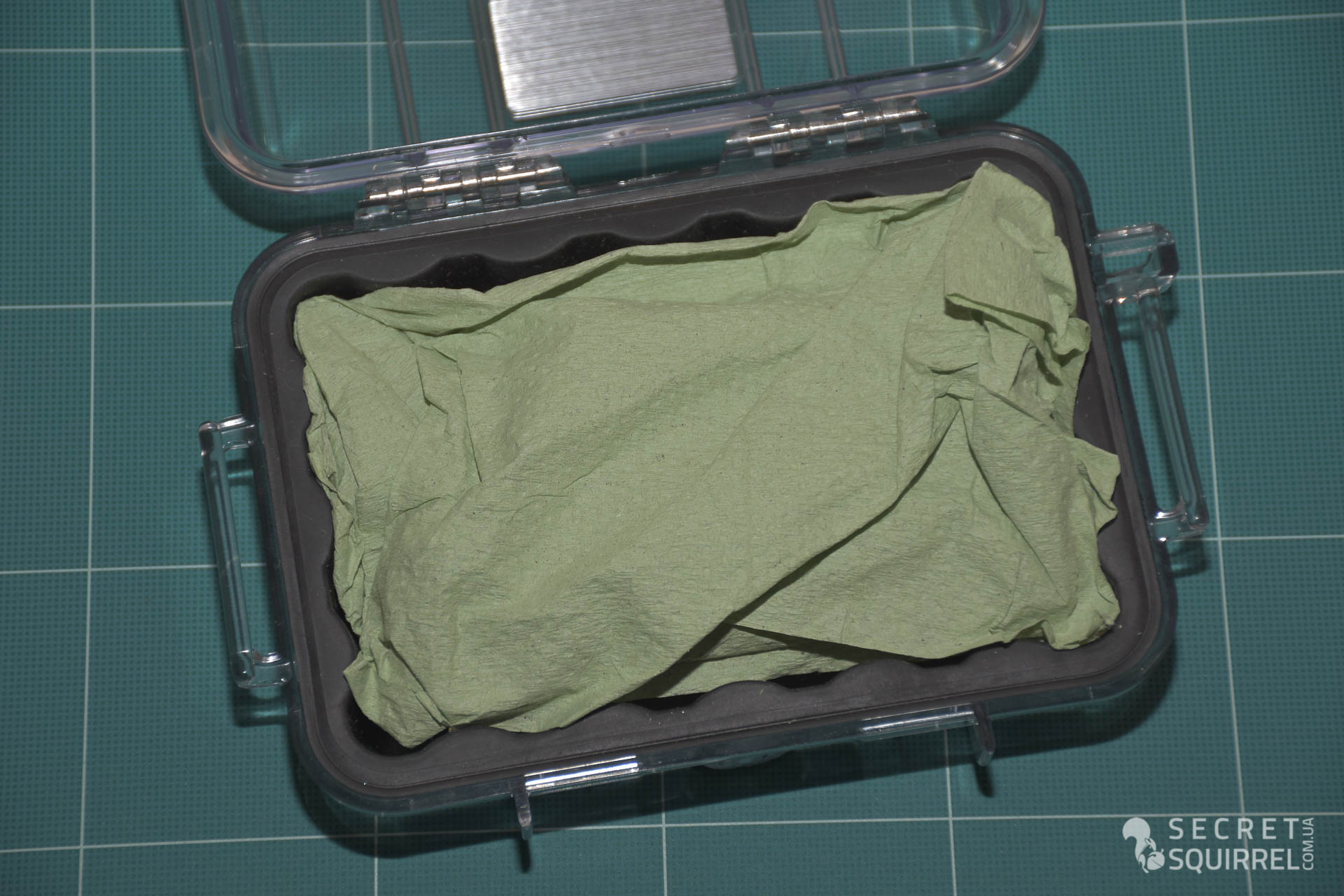
After removing the case from the bath, I wiped it on the outside, left it to dry for several minutes to know that moisture from wet hands and the case would definitely not get on the towels inside and opened the lid. As you can see, the towel inside does not have visible wet areas and remains dry, from which I can conclude that, within the framework of the loads stated by the standard, the case copes with its work.
In conclusion, I will say that the cost of cases like the Pelican Micro Case 1020 often discourages potential buyers from acquiring them. In my opinion, this is a relative thing. To protect two multitools as in our test - yes, using a case is not justified and not cost-effective. But if you take into account the fact that the cost, for example, of the currently flagship smartphone models is approaching $ 1000, then $ 14-20 (~ 2% of the cost) for the Pelican Micro Case 1040 case that can protect them does not seem so wasteful. Which is cheaper: replace a smartphone for 1000 or buy a case for 20, thereby preventing damage to it? And what can we say about professional cameras with a price tag of $ 4000 and above, or thermal imagers, night vision devices, drones? And it’s good if only your spoiled mood due to the fact that you didn’t take the desired frame will depend on the damage of such a drone during transportation. And if this is a reconnaissance drone and the health and lives of a dozen people taking part in an intelligence operation will depend on its performance, is such a case worth it?
You may not be a scout, but the same Pelican Micro Case 1020 for storing an emergency supply of ampoules with drugs for the time of rafting, or protecting memory cards that store all the material captured in a 5-day trip, seems to me a very profitable investment.
The Pelican Micro Case 1020 case presented in the review was purchased at punisher.com.ua store.
Source: https://secretsquirrel.com.ua/snaryazhenie/obzor-kejsa-pelican-micro-case-1020/
Author: MAD














































































































































